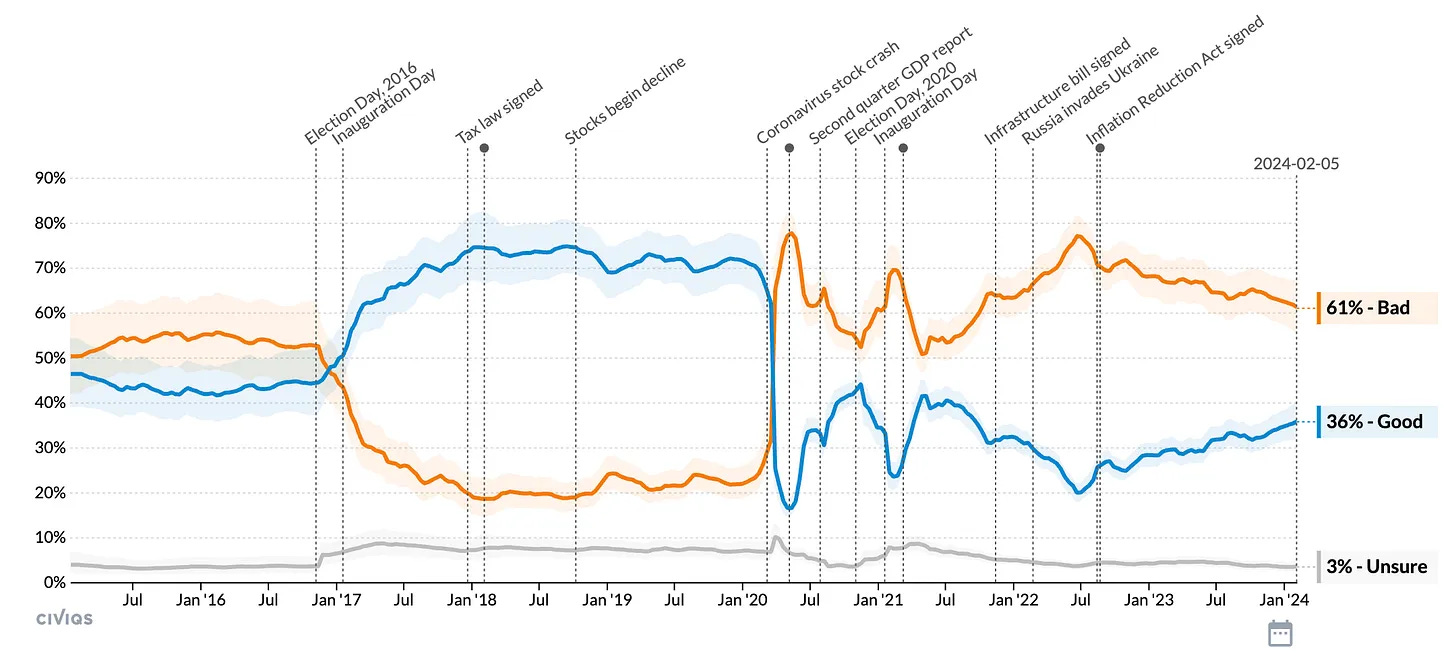It's the cost of living, stupid
A post-pandemic reset, pessimism on hard work, what workers want, a simple explanation for the rise of populism, democracy vs. autocracy, redistricting roundup, a shrinking US population
No. 374 | September 5th, 2025
🗣️ Public Opinion
During Donald Trump’s first term, he was Mr. Economy — so much so that economic perception immediately improved upon his taking over from Obama.
Views of the state of the economy haven’t rebounded in the same way during Trump 2.0. The same apolitical swing voters frustrated with the cost of living under Biden have transferred that frustration onto Trump. Among swing voters, it’s Trump’s worst issue — just like it was for Joe Biden.
Keep reading with a 7-day free trial
Subscribe to The Intersection to keep reading this post and get 7 days of free access to the full post archives.



